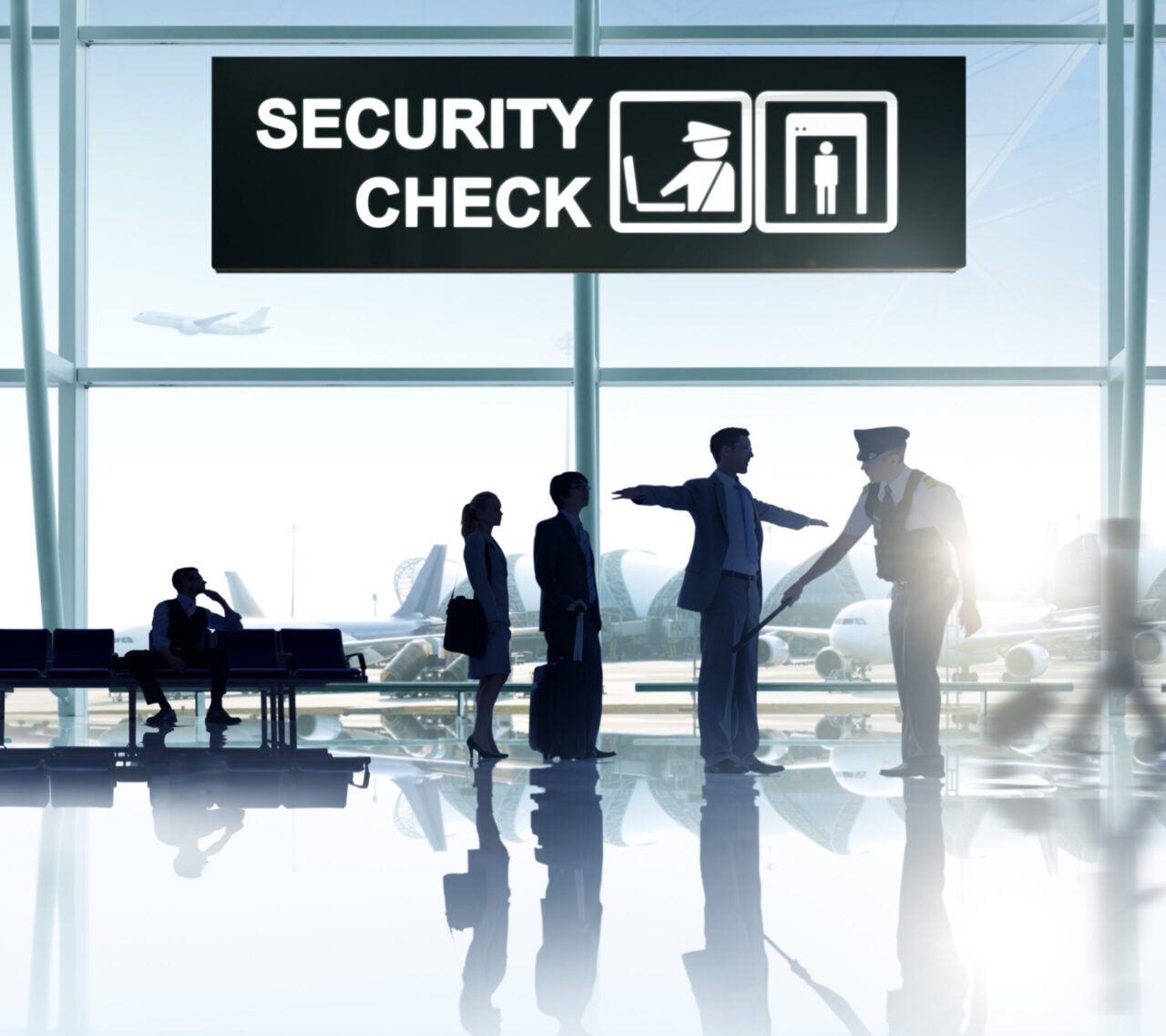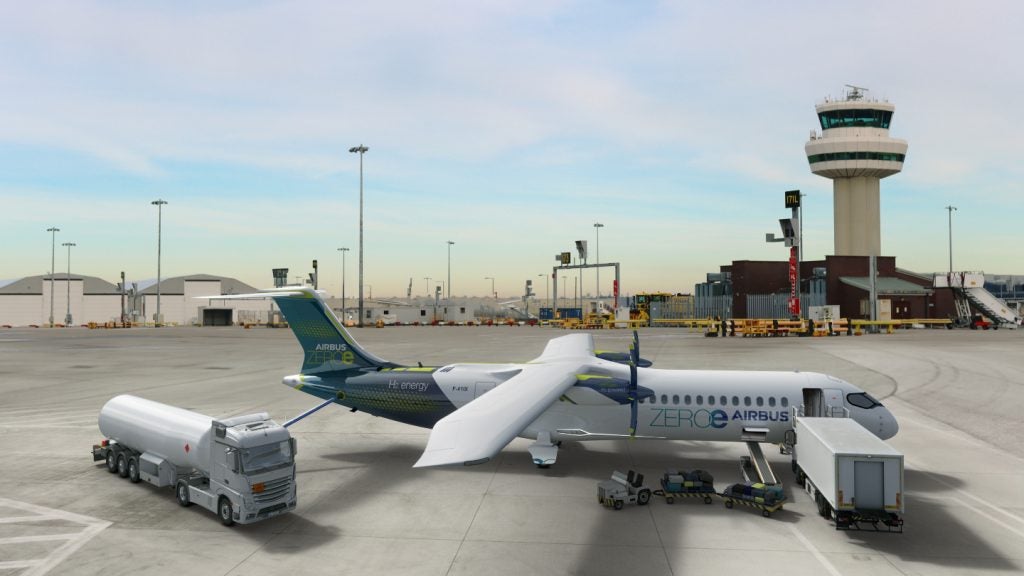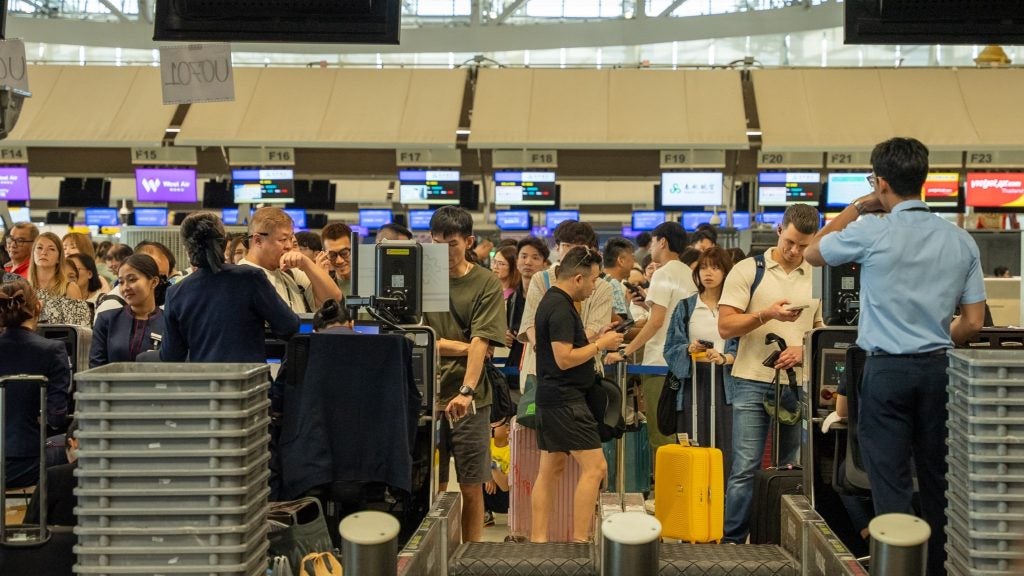
Security is a key area of focus for airports worldwide to ensure the safety of staff and passengers within the airport environment. With millions of passengers passing through airport terminals everyday this can be a challenging task for airport security – can artificial intelligence alleviate some of these challenges?
Nearly 5,700 firearms were confiscated at airport security checkpoints in 2021 making it the highest number recorded by TSA since its inception. Alongside this number a staggering 5,674 guns were seized in 2021 with the majority of weapons – 85% – being fully loaded with ammunition.
How well do you really know your competitors?
Access the most comprehensive Company Profiles on the market, powered by GlobalData. Save hours of research. Gain competitive edge.

Thank you!
Your download email will arrive shortly
Not ready to buy yet? Download a free sample
We are confident about the unique quality of our Company Profiles. However, we want you to make the most beneficial decision for your business, so we offer a free sample that you can download by submitting the below form
By GlobalDataWith this in mind technology company Pangiam has been working on AI technology which will assist security at airports to identify, seize, and plot terror plots, to ensure forbidden items do not slip through security.
Announced in December last year Pangiam showcased ‘Project DARTMOUTH’ – a project aimed at transforming airport security operations by focusing on sourcing threats concealed within baggage.
The developed technology – which works alongside Google Cloud AI and machine learning computer software – aims to make airport travel safer by identifying potential threats in baggage as well as critical points within security lines.
Frankie Youd speaks to Alexis Long, chief strategy officer, Pangiam and Ha McNeill, chief executive officer, Pangiam strategic consulting, to find out more about the benefits of this technology as well as how the technology can assist security at airport checkpoints.


Frankie Youd (FY): Could you provide me with some background on the company and how the concept came about?
Alexis Long (AL): Ever since around 2018, we recognised both in the US and across many European partners that the pace of innovation we were seeing in aviation security wasn’t really keeping up with what we wanted.
We took a number of different actions to try and stimulate innovation more, that included things like putting money into venture capital funds out in Silicon Valley. We created new ways for companies to trial technologies and so on.
One of the really important things we did was to try and break what we thought was a barrier to new entrants entering the market, which was almost a stronghold on data. That meant that it was very difficult for new players in this space to get hold of the data in a common format at a pace that they need it to be able to do creative things with it.
Airports Council International (ACI) spearheaded a campaign that got I think about 25 of the world’s largest buyers of aviation security together and said: “From now on, when we buy new technology, we’re going to want certain things we’re going to want that data open so that other people can bring new technologies to that data. We want the ownership rights sorted, and we want the cybersecurity rules sorted.”
What that document really did was break open the market to new entrants, and what we’re seeing now is airports across the world taking that document and embedding it in their procurement framework, every time they buy a new kit, they have all the rights and ownership access to the data.
How does the technology assist security checks at airports?
AL: When we start looking at that data across lanes and checkpoints at airports, we started being able to look at other patterns that could indicate coordinated threats. That’s super important, because what you see if you ever plot terror plots by sector on a graph, you often see aviation tends to get the most complex ones. It’s rarely individuals that decide I’m going to pick up a knife and come to the airport today and board a plane.
The plots that seem to be disrupted are often a lot more complex. What we can do by digitising all of this information is start looking at things such as when people say I’ve seen a threat item here, but actually alerting to say there’s multiple threat items of a similar type coming through different parts, or different lanes or different airports. Or doing things like detecting component parts of a firearm and starting to say we’ve now found something here that in itself isn’t a threat, but when you look at it in conjunction with those others it is.
We’re really excited about this. We are partnering with AGS airports to rapidly accelerate the development of this technology. As airports build back, there’s a real desire for them to make sure that their important human resources are spent where it’s most needed.
“As airports build back, there’s a real desire for them to make sure that their important human resources are spent where it’s most needed.”
What are some of the benefits that this technology will bring?
AL: If you look at the technology from a checkpoint level what this is designed to do is a few things. The one thing about software is it doesn’t change performance over time. It doesn’t get distracted, doesn’t get tired, it doesn’t get overworked. One of the key things is that we can bring consistency to that checkpoint operations.
We can see an end of the days where you might go through lane A and have an item removed and not at lane B next time you travel. That’s really important for airport operators because consistency is something that’s very hard for them to manage in terms of demand and flow to the airport. It’s good for the passenger as well because you can start being better assured about what you have.
For the security officers, what we want to do is basically say to them is you don’t have to worry about this set of bags. You concentrate your human effort on resolving these ones where we think there’s something wrong with it and actually it now requires a human interaction to determine whether that’s a deliberate attempt to evade security and accidental one or so on. There’s a large opportunity there for officers to focus on where they’re most needed.
From a security perspective we can start putting things together and stitch together lanes and different checkpoints. We can start bringing automation to things that are traditionally very difficult to do like human intuition aspects.
Ha McNeill (HM): When you look at the airport environment, you’re seeing year over year growth of passengers at about 5%, this is pre Covid-19 time, but we anticipate that will come back.
You’re already seeing challenges with processing that amount of people through a checkpoint, and airports are historically limited when it comes to infrastructure, so unless you kind of build a new airport and you drastically expand and make that investment you’re dealing with the same footprint. So how do you move that additional volume through and still give people that better experience?
Bringing the power of AI and machine learning (ML) really does help streamline some of the security processes and move passengers through the checkpoint, and allow these agencies to tackle that that volume issue. AI brings continual improvement to the checkpoint. It is continually learning and is continually improving. You don’t really have to do a whole lot in the background.
“AI brings continual improvement to the checkpoint. It is continually learning and is continually improving.”
What is the current status of the technology at Southampton Airport?
AL: We’re working at group level at the moment, we’re really working on two things. We are doing a series of offline trials and pilots now where we have a first version of the software already developed.
We’re looking at various components of that together with ATS, like the look and feel of it, the user interface, what an appropriate performance rate is. Then in Q2 this year or the end of Q1 we’ll be moving to live pilots so we’ll be deploying this technology on the lanes. To begin with that will be in what we call ‘Shadow Mode’. It will be running on the lanes but not in not impacting an officer’s decision making.
We’ll be using that to refine our settings, ensure performance is where we want it to be and then we have a roadmap forward for how we can dial up to the amount of computational support, and we’ve focused security officer attention and that will come throughout this calendar year.
It’s a very aggressive pilot in terms of timetables, this isn’t something that’s going to sit as a, 12 to 24 months research project. As airports buy and procure this technology, we want this technology to be ready to be to be turned on – so there’s quite a large push to move that forward quite quickly.
Do you think this technology will be the future for airport security management?
AL: Absolutely. I think there’s a lot of things that that need to be set up to make sure that along with us, other people can follow because we want to create an ecosystem of suppliers here where software companies big or small, can all participate.
We’re pushing forward to create that environment now, but I don’t see anyone going back after this. I think the requirement to make sure that officers have as much support as possible in their decision making and can focus on fewer bags or items that pose the greatest risk of harm and allow the vast majority of people that pose no threat to an aircraft to continue going, I think is something that’s here to stay.
HM: I agree. think for all of the pressures that the industry and the regulators are currently facing, we wouldn’t see this going away and are actually probably viewing it as creating potentials to take this technology and apply it to different use cases within the aviation industry, and maybe even beyond.








